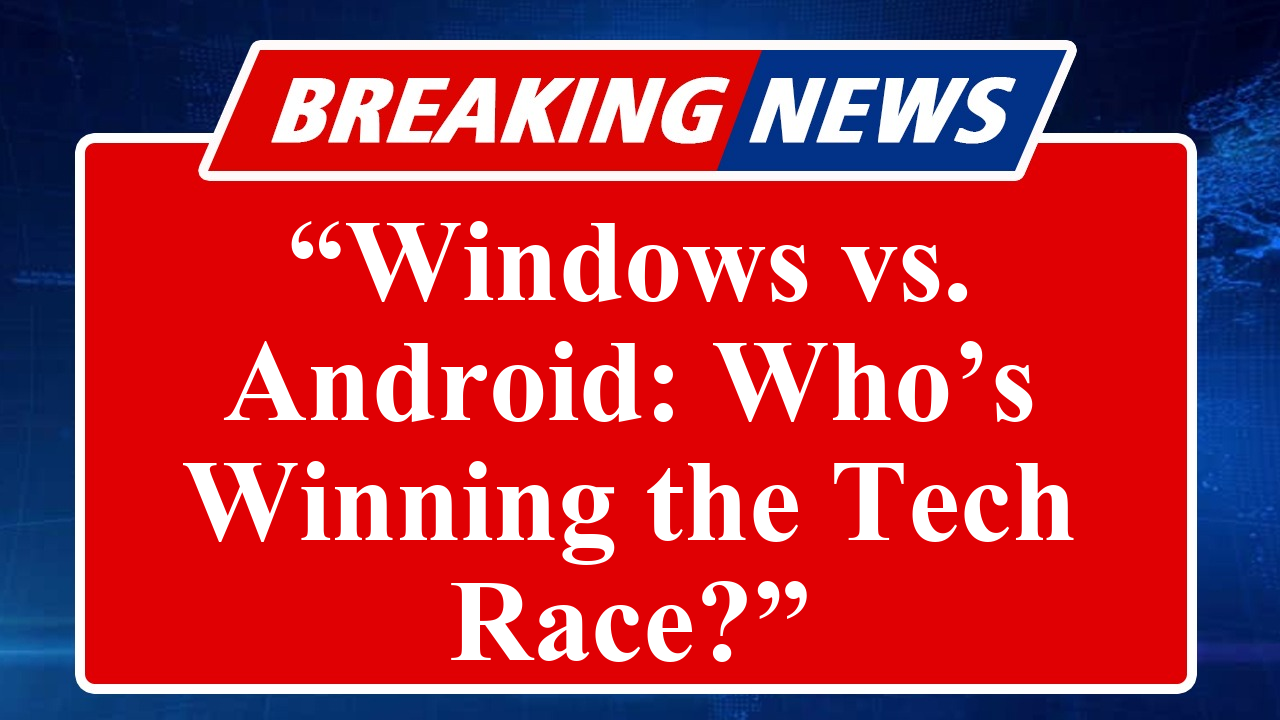Microsoft claims 1.4 billion active Windows users, but Android’s 3.3 billion users and 71.85% mobile OS market share highlight a shift to mobile-first computing. Windows struggles with a declining PC market, while Android thrives in emerging markets like India. The article explores user base trends, market dynamics, and Microsoft’s challenges in a mobile-driven world.
Windows’ Battle Against Android’s Mobile Supremacy
Microsoft recently reiterated that Windows powers over 1.4 billion monthly active devices globally, a figure that has remained stagnant for years, according to a blog post by Microsoft EVP Yusuf Mehdi. This number, encompassing Windows 10 and 11 users, reflects the operating system’s enduring presence in the desktop and laptop markets. However, in a mobile-first world, Android’s dominance is undeniable, with over 3.3 billion active users and a commanding 71.85% share of the global mobile operating system market as of 2025, per StatCounter data.
The contrast is stark. While Windows maintains a stronghold in traditional computing, particularly among gamers and professionals reliant on Windows-exclusive software, Android’s growth has been fueled by its open ecosystem and widespread adoption in smartphones and tablets. In regions like India, Brazil, and Indonesia, Android holds over 85% market share, driven by affordable devices from manufacturers like Samsung, Xiaomi, and OPPO. India, in particular, has seen explosive growth in Android usage, with the country’s smartphone penetration soaring due to low-cost devices and widespread 4G/5G connectivity.
Microsoft’s challenges stem from a broader market shift. Global PC shipments, while rebounding slightly to 274 million units in 2025 (a 4.8% increase from 2019, per IDC), pale in comparison to smartphone shipments, which hit 301.4 million in Q1 2025 alone. The PC market’s growth, driven partly by work-from-home trends, hasn’t translated into a significant uptick in Windows’ user base. Meanwhile, Android’s user base has grown steadily, from 1.4 billion in 2015 to 3.3 billion in 2025, capitalizing on the global smartphone boom.
Windows’ stagnation is further highlighted by its slow adoption of Windows 11. Despite being a free upgrade, only 36.65% of Windows users have shifted to Windows 11 as of early 2025, with 60.4% still on Windows 10, according to StatCounter. User resistance, often due to Windows 11’s stringent hardware requirements and perceived lack of compelling features, has hindered Microsoft’s push for modernization. Some users have even reverted to Windows 10 or explored alternatives like Linux, citing dissatisfaction with Windows 11’s interface and performance issues.
Android, by contrast, benefits from its flexibility. Available on devices ranging from budget phones to premium flagships, it caters to diverse markets. In the US, Android holds a 42.34% mobile OS market share, trailing iOS’s 57.39%, but globally, it dominates with a 71.42% share compared to iOS’s 27.93%. The Google Play Store, hosting 1.68 million apps, further strengthens Android’s ecosystem, with apps like TikTok and Instagram driving massive user engagement.
Microsoft’s struggles are compounded by the decline in traditional PC usage. As smartphones and tablets become more powerful, they are increasingly replacing PCs for everyday tasks. In 2023, Statista noted that Mac sales, once a significant portion of Apple’s revenue, dropped to just 7.7%, signaling a broader trend of consumers favoring mobile devices over desktops. This shift has hit Windows harder, as Microsoft lacks a robust mobile OS to compete with Android or iOS.
In India, the dynamics are particularly telling. With over 600 million smartphone users, the country is a key battleground for mobile OS dominance. Android’s affordability and versatility make it the preferred choice, with brands like Xiaomi and Samsung leading the charge. Windows, while still prevalent in enterprise settings and among PC users, struggles to maintain relevance in a market where mobile devices dominate digital access.
Microsoft’s attempts to bridge the gap, such as integrating Android apps into Windows 11 via the Windows Subsystem for Android, have seen limited success. The feature, while innovative, hasn’t significantly boosted Windows’ appeal in a mobile-centric world. Meanwhile, Android’s ecosystem continues to expand, with forecasts predicting over 4 million apps on the Google Play Store by the end of 2025.
The numbers paint a clear picture: while Windows retains a massive user base, its growth is stunted compared to Android’s relentless expansion. As emerging markets like India drive global smartphone adoption, Android’s lead seems unassailable. Microsoft’s challenge lies in reinventing Windows’ relevance in a world where mobile devices are the primary gateway to digital life.
Disclaimer: This article is based on recent reports, industry data, and sources such as StatCounter, IDC, and Microsoft’s official statements. Information is accurate as of July 2025 and subject to change. Readers are advised to verify real-time data for the latest updates.

